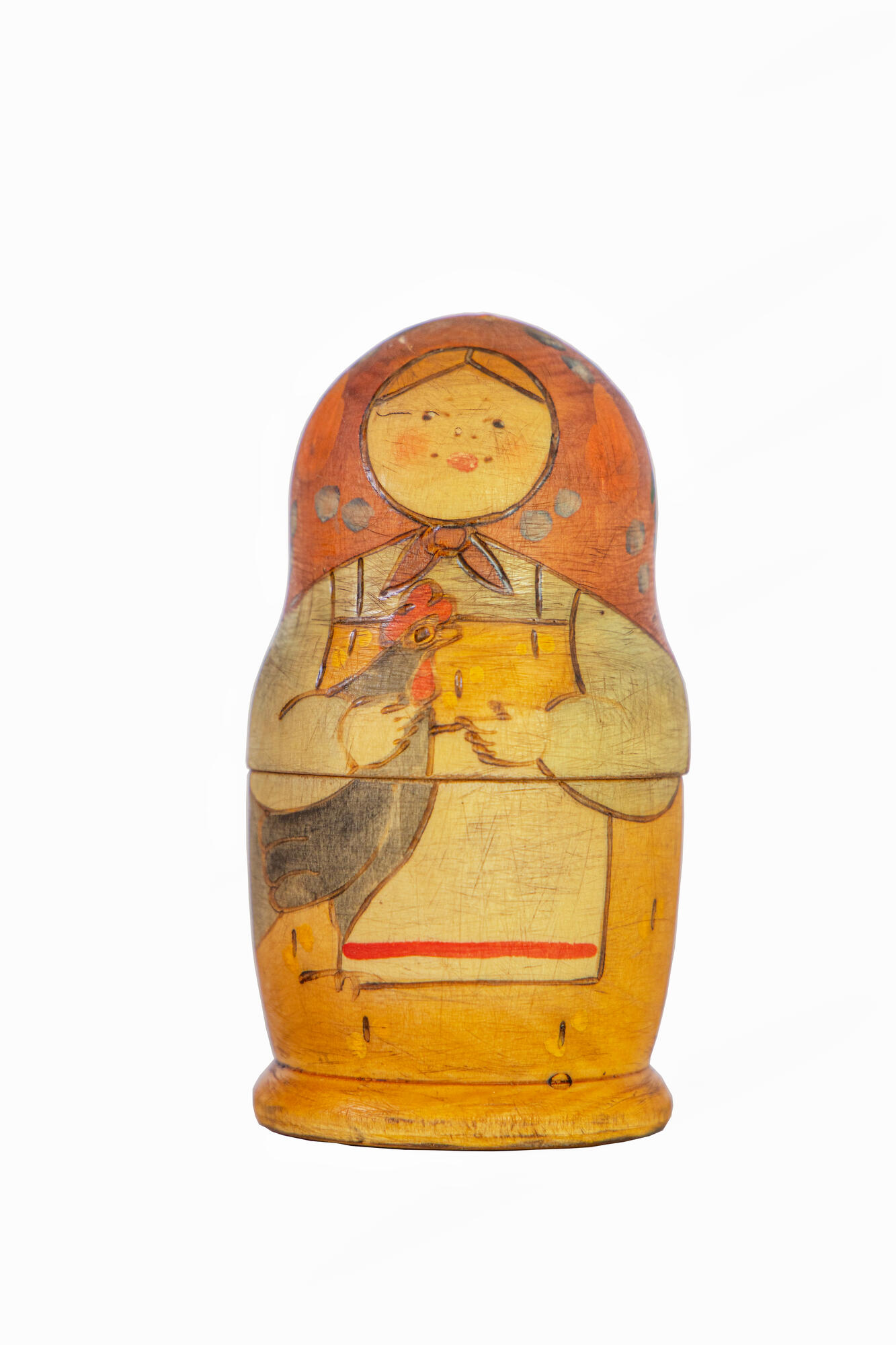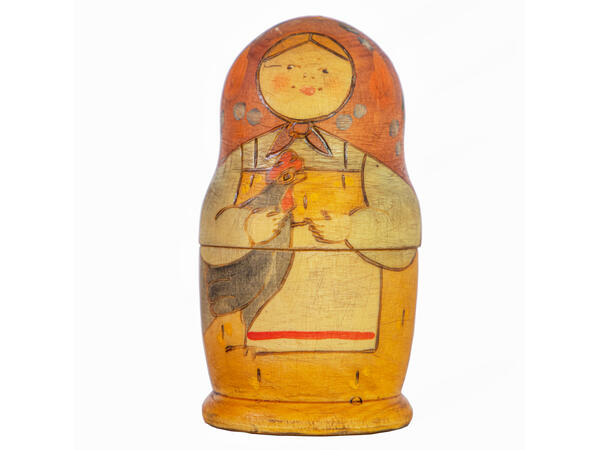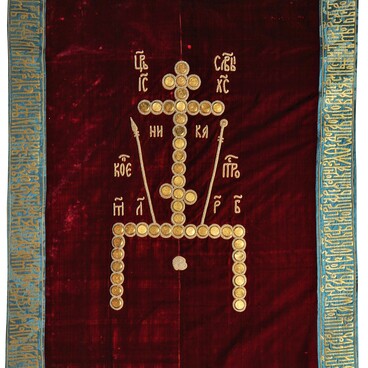The matryoshka “Girl with a Rooster” of five figures is one of the earliest in the museum collection. It was donated by the Stakheev family, formerly a famous dynasty of large industrialists, patrons, collectors of folk and decorative arts. According to the donators, the matryoshka had been kept in the family for several decades.
Samples of the first matryoshka dolls were created in the Moscow workshop “Children’s Education”, owned by Anatoly Mamontov. Here, artists first created dolls, whose outfits replicated the festive women’s clothing of residents of different Russian provinces and counties. The author of the first matryoshka dolls is considered to be the Russian artist Sergey Malyutin. In 1890, the Russian turning craftsman Vasiliy Zvezdochkin, according to his sketch, carved a matryoshka consisting of eight figures — these were called eight-seater. “Matryona” was a round-faced peasant girl in an embroidered shirt, sarafan and apron. On her head was a colorful scarf, and in her hands was a black cockerel.
In 1904, the Training toy workshop of the Moscow Provincial Zemstvo in Sergiev Posad bought part of the range of products of the workshop “Children’s Education”, including matryoshka dolls. The doll dressed as a peasant girl quickly gained popularity. In Sergiev Posad, sets of matryoshka dolls were produced in large quantities.
The matryoshka “Girl with a Rooster” was turned in the 1900s in the zemstvo or in one of the private workshops of the city inspired by Sergei Malyutin’s matryoshka. It is depicted as a peasant woman in a traditional folk costume with a black cock in her hands.
Translated from Latin, “matron” (“matryoshka” is a diminutive form of “matrona”) means the “mother of the family”. The matryoshka doll was considered the personification of the family as a whole, where the first and largest doll correlates with the mother — the keeper of the hearth, a life-loving woman, open to the world, and the next dolls are her numerous family members.
The bird in this case also has a symbolic meaning. In the old days, the rooster was considered a symbol of fertility and procreation, a harbinger of the sun, its herald. With his morning call, he announced the dawn, welcomed the sunrise and the beginning of a new day.
Samples of the first matryoshka dolls were created in the Moscow workshop “Children’s Education”, owned by Anatoly Mamontov. Here, artists first created dolls, whose outfits replicated the festive women’s clothing of residents of different Russian provinces and counties. The author of the first matryoshka dolls is considered to be the Russian artist Sergey Malyutin. In 1890, the Russian turning craftsman Vasiliy Zvezdochkin, according to his sketch, carved a matryoshka consisting of eight figures — these were called eight-seater. “Matryona” was a round-faced peasant girl in an embroidered shirt, sarafan and apron. On her head was a colorful scarf, and in her hands was a black cockerel.
In 1904, the Training toy workshop of the Moscow Provincial Zemstvo in Sergiev Posad bought part of the range of products of the workshop “Children’s Education”, including matryoshka dolls. The doll dressed as a peasant girl quickly gained popularity. In Sergiev Posad, sets of matryoshka dolls were produced in large quantities.
The matryoshka “Girl with a Rooster” was turned in the 1900s in the zemstvo or in one of the private workshops of the city inspired by Sergei Malyutin’s matryoshka. It is depicted as a peasant woman in a traditional folk costume with a black cock in her hands.
Translated from Latin, “matron” (“matryoshka” is a diminutive form of “matrona”) means the “mother of the family”. The matryoshka doll was considered the personification of the family as a whole, where the first and largest doll correlates with the mother — the keeper of the hearth, a life-loving woman, open to the world, and the next dolls are her numerous family members.
The bird in this case also has a symbolic meaning. In the old days, the rooster was considered a symbol of fertility and procreation, a harbinger of the sun, its herald. With his morning call, he announced the dawn, welcomed the sunrise and the beginning of a new day.



